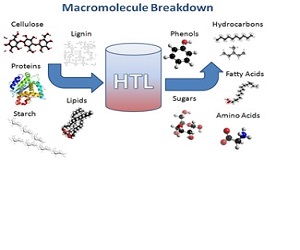
Biography
Biography: Wennan Zhang
Abstract
Hydrothermal liquefaction (HTL) of algae biomass has been shown to be a feasible technique to treat large amount of wet algae biomass for the production of a biocrude suitable to be used as biofuel similar to fossil oil. From HTL process, biocrude or bio-oil is produced at temperature of 250 to 370 °C and pressure of 5 to 25MPa with a residence time of 5 to 60 min. In the process, up to 85% of the oxygen contained in biomass can be removed as CO2 and water. Thus, only about 10% oxygen remains in the HTL biooil which leads to a high heating value of 35MJ/kg (fossil diesel 42MJ/kg) in comparison to pyrolysis oil with oxygen content 38% and heating value 18MJ/kg. A further process of hydrotreatment and hydrocracking can remove the 10% oxygen completely and finally a drop-in fuel, gasoline or diesel, can be produced. Comparing biomass gasification and pyrolysis, HTL uses wet feedstock and avoids high temperature operation and energy consumption for feedstock drying. However, HTL technology development is so far in the stage of lab-scale study. This paper is to review algae-HTL-diesel process and to identify the feasibility of HTL application to algae. The algae properties and different operation conditions such as temperature, pressure, loading rate, catalysts, heating rate etc. may lead to different quality and composition of end products from algae HTL, which will be reviewed in this paper.


